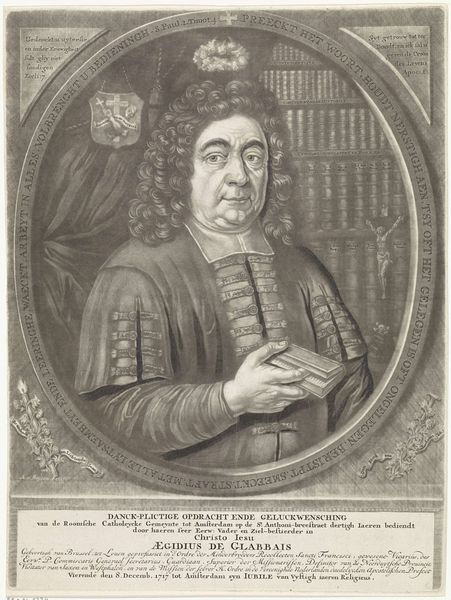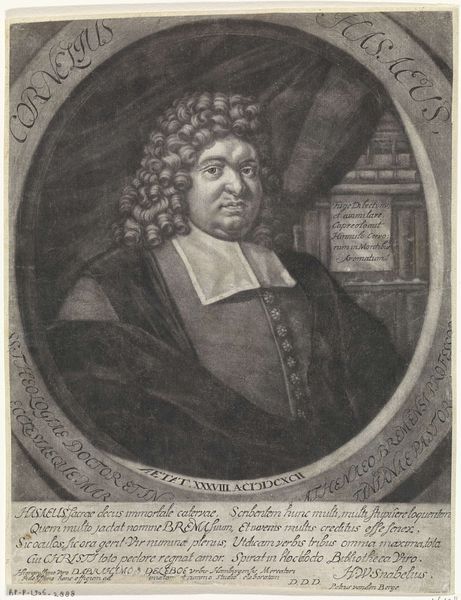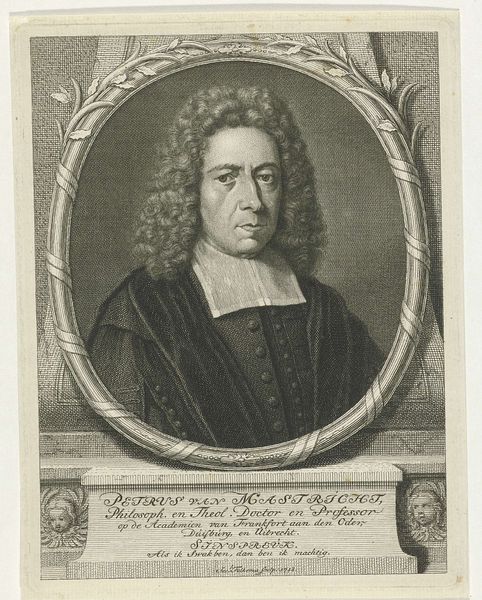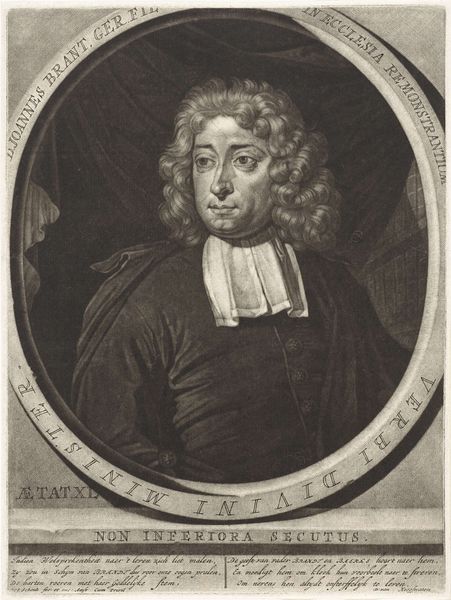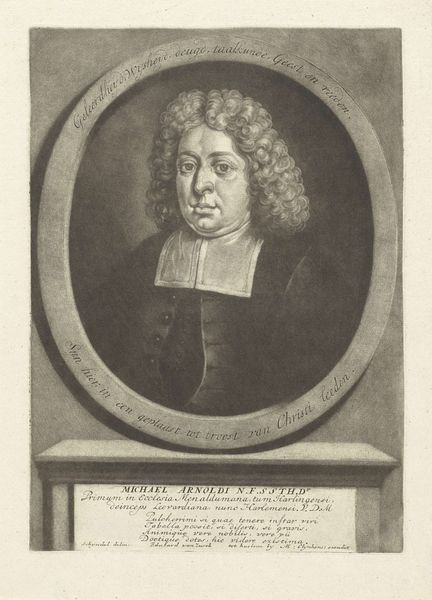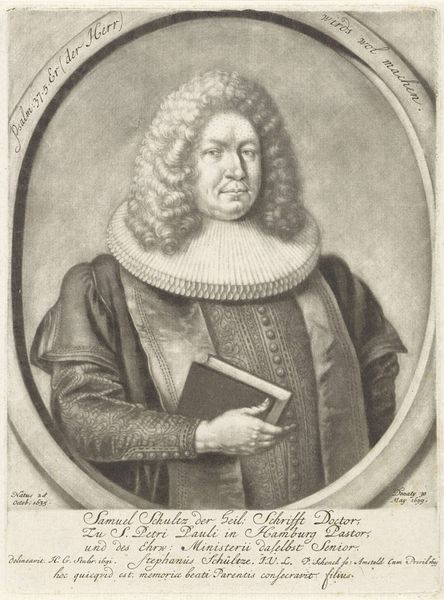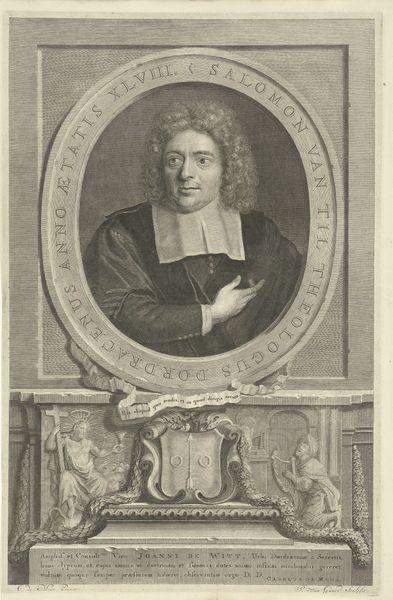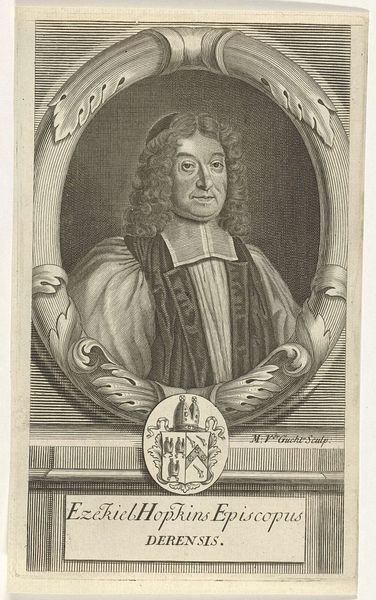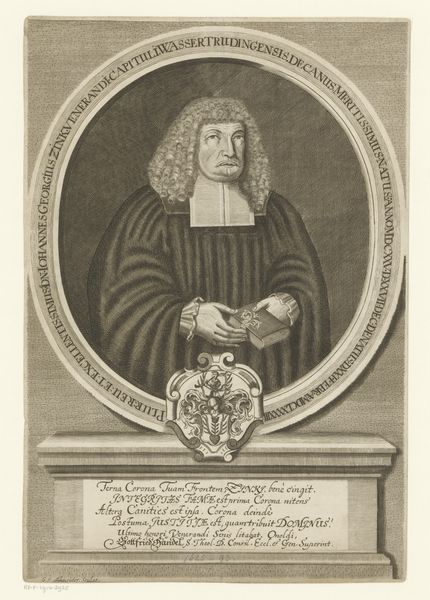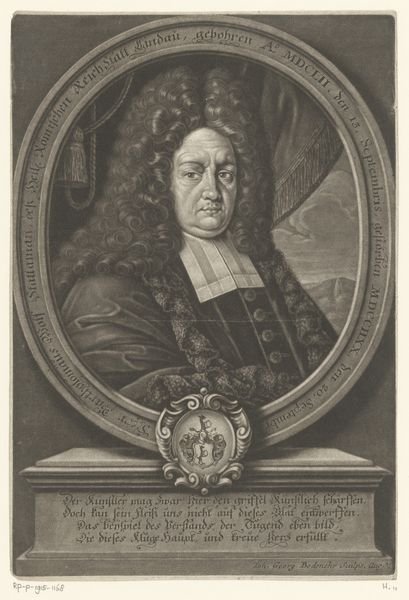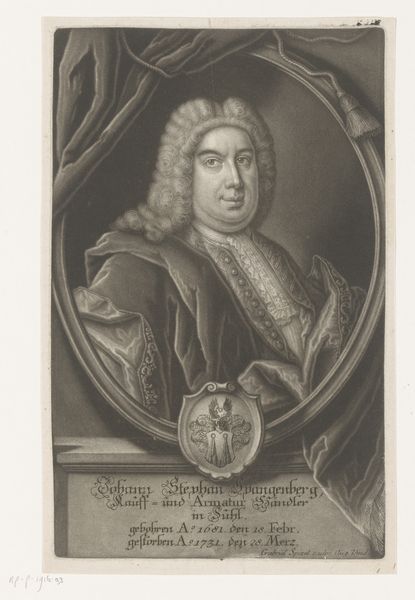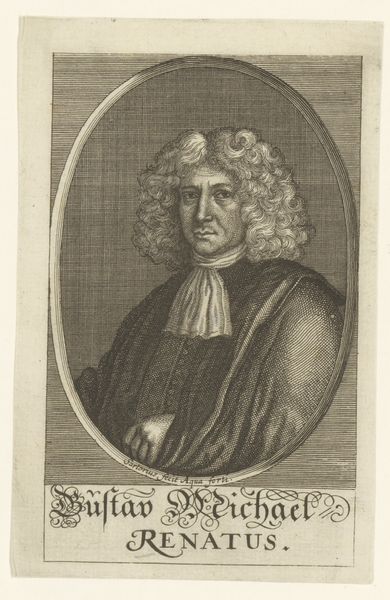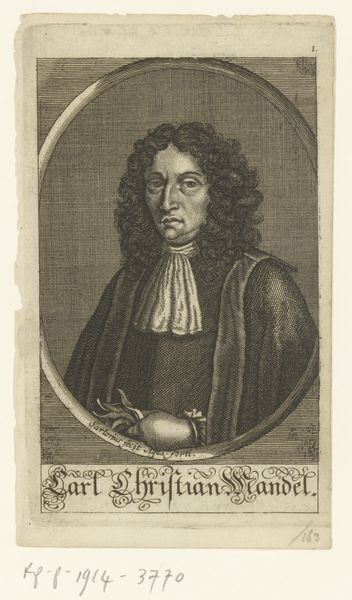
engraving
#
portrait
#
baroque
#
portrait image
#
engraving
Dimensions: height 400 mm, width 301 mm, height 30 mm, width 300 mm
Copyright: Rijks Museum: Open Domain
Curator: This somber portrait really sets a stage, doesn't it? A figure framed within layered symbolic borders... it evokes such a sense of baroque grandeur. Editor: Indeed. We're looking at a print from 1717. Rijksmuseum holds "Portret van Aegidius de Glabbais" by Andries van Buysen, Sr., an engraving full of minute details. Note the book the subject is holding—and the heavy use of text on the artwork surface... the meticulous work of the printmaker and the consumption of that labour. It makes you think about the process. Curator: Absolutely, it’s fascinating to consider van Buysen's practice and labor here. The lines create texture and weight, especially in the subject's robes and the rich darkness of his wig. Let's situate the image with its references, though; Aegidius de Glabbais was a priest celebrating his 50th Jubilee. The text around the border speaks to themes of duty and devotion, deeply entwined with societal expectations. He is, therefore, shown with symbols representing his vocation and his virtue, while all this symbolic context serves to legitimize him, really. Editor: Right, this wasn't merely decorative; these materials aimed at creating this authority that you are speaking about. The books in the background indicate Glabbais’ learnedness, that tool to achieve certain means. The precision required to render these details makes the artwork all about labour as commodity, but it also provides visual access for Glabbais to reinforce specific qualities and position. It brings that dialogue between what the church sells and what believers actually get. Curator: Yes, and look how that power structure—the power that Glabbais wants to show the world, as it depends also on materials. And it depends on this material's endurance through time as an act of visual legacy, a record. Consider who it aims to serve... beyond celebrating a priest. Editor: So, ultimately, both art and labor are caught in service... to whom, or to what, then? That's where it gets tricky. Curator: It's that very intersection of devotion, legacy, and material reality. What story will it tell in the coming decades... it speaks to endurance, not simply survival. Editor: Exactly, a dialogue to be revisited, with layers and tensions constantly emerging... just like the work itself!
Comments
No comments
Be the first to comment and join the conversation on the ultimate creative platform.
